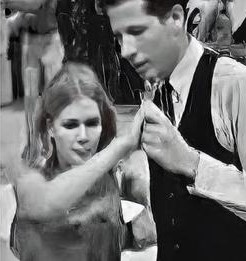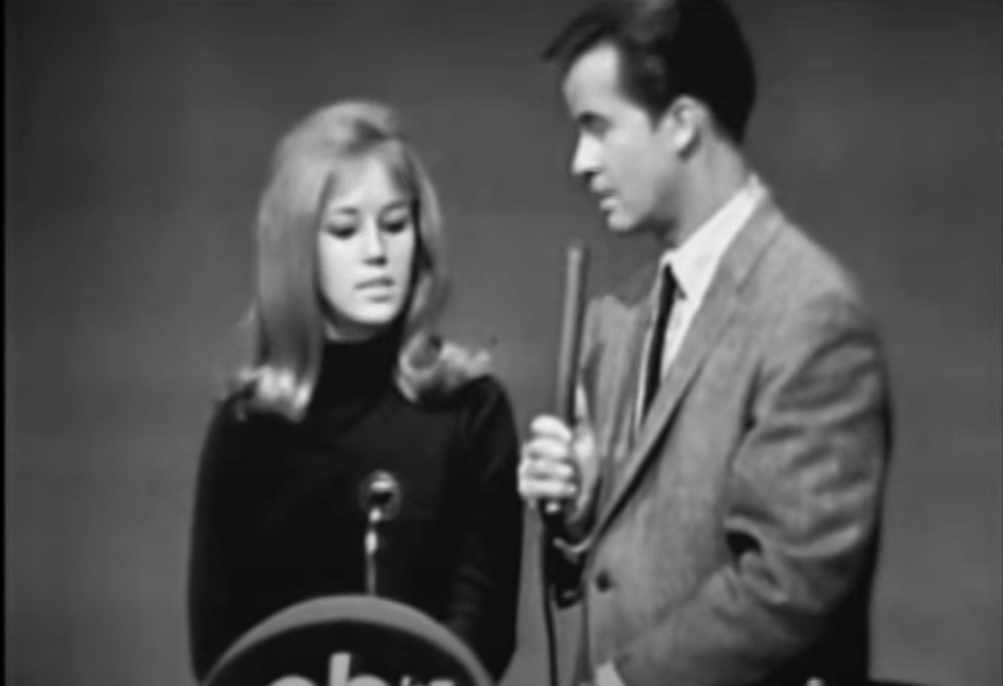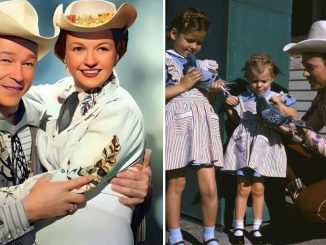In 1967, American Bandstand brought excitement to living rooms across America with its legendary dance competitions. Hosted by the charismatic Dick Clark, the show was more than just a showcase of great music—it was a cultural phenomenon that celebrated everyday people with a passion for dancing. One particular dance-off captured the essence of the show, as couples battled it out on the dance floor for fabulous prizes, all set to the upbeat rhythms of Neil Diamond’s hit, “You Got To Me.” Let’s take a closer look at this iconic moment in television history.

The Prizes: A Dream Come True for Contestants
The allure of American Bandstand wasn’t just about dancing; it was also about the incredible prizes up for grabs. Contestants in the 1967 dance competition had plenty to look forward to, with rewards tailored to the era’s pop culture trends.
- For the Boys: Male contestants received cutting-edge technology for the time—a Craig car stereo. This was a coveted prize, perfect for any young man wanting to cruise with the latest tunes. Additionally, they were gifted a small handcrafted radio, ideal for portable listening.
- For the Girls: Female contestants weren’t left out, receiving stylish luggage sets from American Tourister. These fancy suitcases embodied sophistication and practicality, making them the perfect travel companion.
- For Everyone: All contestants could pick 12 albums from a selection of the era’s hottest musicians, allowing them to take home the music that inspired their moves.
- The Grand Prize: The ultimate reward was a Magnavox color TV—a luxurious addition to any home, bringing vibrant programming to life in an era when most broadcasts were still in black-and-white.
These prizes reflected the mid-century American dream: sleek technology, stylish accessories, and entertainment for the whole family.
The Contestants: Everyday Stars on the Dancefloor
What made American Bandstand truly special was its focus on everyday people. The contestants were not professional dancers; they were regular teens and young adults who loved to move to the beat of the latest hits. Each participant brought their unique flair to the dancefloor, showcasing twirls, kicks, and spins that thrilled both the judges and the audience.
In this particular competition, the semi-finalists wore numbered tags on their backs, allowing the judges to keep track of their favorite couples. The broadcast, captured in black-and-white, added a touch of nostalgia that still resonates with viewers today. The thrill of seeing young couples give their all on the dance floor is a timeless reminder of the joy that dance can bring.
The Music: Neil Diamond Sets the Tone
No dance-off is complete without a killer soundtrack, and this competition was no exception. The couples grooved to Neil Diamond’s 1967 hit, “You Got To Me.” The upbeat rhythm and catchy melody were the perfect backdrop for the dancers to show off their best moves.
Neil Diamond’s music, with its energetic beats and soulful lyrics, epitomized the spirit of the 1960s. Songs like “You Got To Me” captured the excitement and freedom of the era, making it a fitting choice for a high-stakes dance-off. As the contestants twirled and kicked to the music, their energy was infectious, reminding viewers why American Bandstand was a must-watch show.
The Judges: Making the Tough Call
Judging a dance competition is no easy task, especially when all the contestants bring their A-game. For this particular episode, Dick Clark relied on two judges to decide which couple would take home the top honors. After the first round of dancing, the judges faced a dilemma—they simply couldn’t choose a winner.
When the music stopped, the judges requested more time to watch the dancers. Clark, always the consummate host, checked with his producer and allowed the contestants to perform for an additional minute. This extension added an extra layer of suspense and excitement, as the couples gave it everything they had in a bid to impress the judges.

The Grand Finale: A Moment of Anticipation
As the music faded for the final time, the contestants lined up in numerical order, awaiting the judges’ decision. The air was thick with anticipation as the judges deliberated, reflecting on each couple’s performance. This buildup was part of what made American Bandstand so captivating—it wasn’t just a dance competition; it was a spectacle filled with drama, excitement, and raw talent.
The show’s format allowed viewers to connect with the dancers on a personal level, rooting for their favorite couples and experiencing the highs and lows of competition alongside them. For the contestants, the opportunity to perform on national television was a once-in-a-lifetime experience, regardless of the outcome.
The Legacy of American Bandstand
American Bandstand wasn’t just a TV show; it was a cultural institution that shaped the music and dance trends of its time. From its debut in the 1950s to its final episode in 1989, the show introduced generations of viewers to the hottest new songs and dance crazes.
The 1967 dance competition highlighted what made the show so special—its ability to celebrate the creativity and energy of everyday people. By giving young dancers a platform to shine, American Bandstand inspired countless viewers to hit the dancefloor and embrace the joy of movement.
Conclusion: Reliving the Magic of 1967
The 1967 American Bandstand dance competition was more than just an episode of a beloved TV show—it was a snapshot of a vibrant era. From the incredible prizes to the spirited performances, every element of the event captured the essence of 1960s pop culture.
Dick Clark’s charisma, the unforgettable soundtrack, and the contestants’ passion for dance combined to create a moment that continues to resonate with fans. Whether you remember watching it live or are discovering it for the first time, the magic of American Bandstand lives on as a testament to the power of music, dance, and the joy of being in the spotlight.


